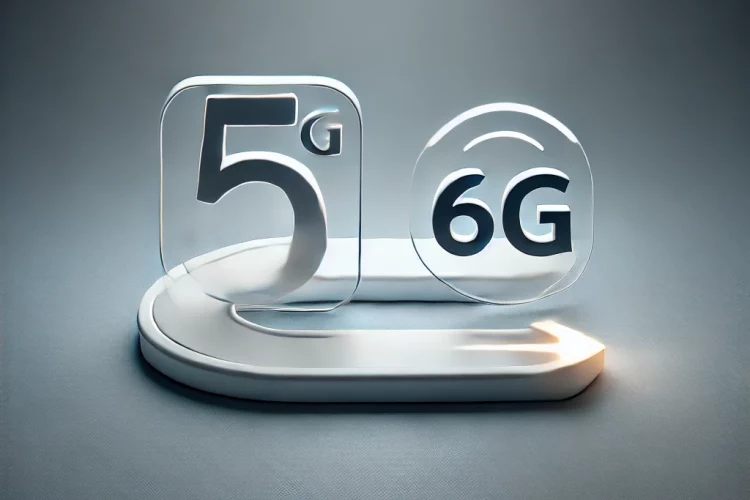
6G Technology: The Future of Connectivity
As 5G networks continue to roll out and transform global connectivity, the tech world is already looking ahead to the next big leap: 6G. Expected to become commercially available around 2030, 6G is anticipated to bring revolutionary advancements in speed, latency, and connectivity far beyond what 5G offers today. With 6G, we’re looking at a future where immersive digital experiences, fully autonomous systems, and enhanced human-machine interactions become commonplace. This article dives into what 6G is, its potential capabilities, and what it could mean for the future of technology and connectivity.
1. What is 6G?
6G, or the sixth generation of mobile networks, is expected to be the next evolutionary step in wireless communication, building on the foundation of 5G. While 5G has ushered in the era of ultra-fast internet and low-latency connections, 6G is projected to offer speeds up to 100 times faster than 5G, with data rates potentially reaching 1 terabit per second (Tbps).
6G will likely utilize terahertz (THz) frequency bands, which are much higher than the millimeter waves used in 5G, allowing for the transfer of massive amounts of data in real-time. With advanced AI integration, edge computing, and machine learning, 6G is expected to support fully autonomous systems, smart cities, and hyper-connected digital environments.
2. Key Features of 6G
a) Ultra-Fast Speeds
6G will take wireless speeds to unprecedented levels, enabling real-time communication for complex tasks such as holographic video calls, virtual reality (VR), and augmented reality (AR) experiences without lag. These speeds will be necessary for emerging technologies like autonomous vehicles and advanced robotics.
b) Near-Zero Latency
Latency is the delay between sending and receiving data. 6G promises latency as low as 1 millisecond or less, enabling truly instantaneous communication between devices. This will be essential for applications like remote surgery, real-time AI decision-making, and tactile internet, where immediate feedback is critical.
c) Massive Connectivity
While 5G allows for billions of devices to be connected, 6G will increase this capacity exponentially, allowing for ubiquitous connectivity across every corner of the globe. From smart cities to rural areas, 6G will bring the Internet of Everything (IoE), where not only devices but also infrastructure and systems are interconnected.
d) Terahertz Waves
6G is expected to operate in the terahertz (THz) frequency range, which will enable much higher data transfer rates. Terahertz waves, however, come with technical challenges, such as limited range and difficulty penetrating obstacles. Overcoming these challenges will be crucial to making 6G viable.
3. Potential Applications of 6G Technology
a) Immersive Experiences: Holographic Communication and Extended Reality (XR)
6G will enable the transmission of holographic images and 3D videos in real-time, allowing for holographic video calls, virtual meetings with lifelike presence, and immersive education or entertainment experiences. Extended Reality (XR)—a combination of VR, AR, and mixed reality (MR)—will become more realistic, engaging, and accessible with 6G’s ultra-fast speeds and minimal latency.
b) Fully Autonomous Systems
6G will empower fully autonomous systems, from self-driving cars to drones and robots, by providing the real-time data processing and communication necessary for them to operate safely and efficiently in complex environments. These systems could revolutionize industries such as transportation, logistics, and healthcare.
c) Smart Cities and IoT Expansion
With the massive connectivity offered by 6G, smart cities will reach their full potential, with interconnected infrastructure, utilities, vehicles, and devices working seamlessly together. From smart traffic management systems to automated public services, 6G will allow for a hyper-connected urban environment. The expansion of the Internet of Things (IoT) will enable better data collection, optimization of resources, and automation in industries like agriculture, manufacturing, and public safety.
d) Advanced Healthcare: Remote Surgeries and Real-Time Monitoring
The combination of 6G’s high speeds and ultra-low latency will make remote surgeries using robotic systems more reliable, with surgeons operating in real-time from across the world. Additionally, real-time health monitoring through wearables and smart devices will allow for early detection of health issues and personalized treatment plans.
e) AI and Machine Learning Integration
6G will enable AI and machine learning to work in real-time, improving their capabilities and effectiveness. The integration of AI with 6G networks could enable intelligent systems that can predict network traffic, optimize resource allocation, and even anticipate cybersecurity threats before they occur.
4. Challenges to 6G Development
a) Technological Barriers
Operating in the terahertz frequency range presents significant challenges, particularly in overcoming the short-range and obstacle penetration limitations of terahertz waves. Developing the necessary infrastructure and components to make 6G feasible will require significant advancements in antenna technology, signal processing, and materials science.
b) Energy Consumption
As data speeds increase, so does energy consumption. One of the major challenges for 6G will be managing the energy demands of a hyper-connected world, especially for large-scale deployments of autonomous systems and smart cities. Innovations in energy-efficient technologies will be crucial.
c) Security and Privacy Concerns
With the massive increase in connected devices, 6G will need robust security frameworks to protect data and prevent breaches. The rise of connected IoT devices, smart cities, and autonomous systems will make cybersecurity more complex, requiring advancements in quantum-safe encryption and AI-driven cybersecurity solutions.
5. When Will 6G Be Available?
While 6G is still in the early stages of research and development, the general consensus is that we will start seeing commercial rollouts of 6G networks around 2030. In the meantime, 5G Advanced or 5.5G will continue to evolve, bridging the gap between current 5G capabilities and future 6G technologies.
Countries like South Korea, China, the U.S., and Japan are leading the charge in 6G research, with companies such as Samsung, Huawei, Nokia, and Ericsson already investing heavily in 6G development. We can expect to see early-stage trials and prototypes as early as 2025, with the technology maturing towards the end of the decade.
Conclusion: The Future of Connectivity with 6G
While 5G is just beginning to unlock new possibilities in connectivity, 6G promises to push the boundaries even further. With ultra-fast speeds, near-zero latency, and massive connectivity, 6G will enable groundbreaking advancements in industries ranging from healthcare and transportation to entertainment and smart cities. Although we are still years away from experiencing the full potential of 6G, the ongoing research and development suggest that this next-generation technology will have a profound impact on the way we live, work, and connect in the future.
Stay tuned as 6G continues to evolve and prepare for a world where seamless, instantaneous communication is the norm.





